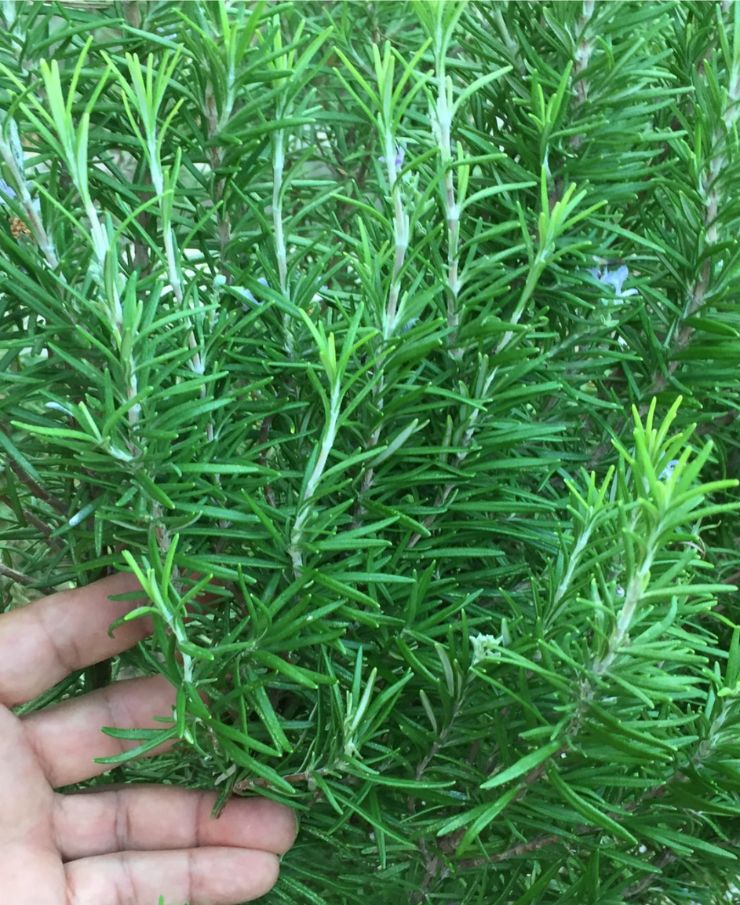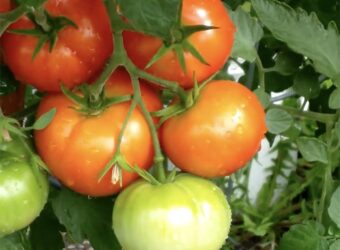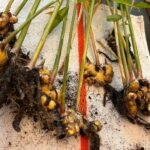Rosemary is a wonderful herb, loved for its delightful scent and strong taste, and is used in both cooking and natural remedies. As the summer season arrives, it’s the perfect time to gather this versatile herb from your garden.
Knowing how to harvest rosemary properly will help you avoid harming the plant while also promoting its growth for future harvests. In this article, I’ll provide you with tips on how to harvest and store rosemary so that you can enjoy its benefits all year long!
Why Should We Harvest Rosemary Properly?
If you don’t harvest your rosemary regularly, your plant will become leggy and lanky. Regularly harvesting your rosemary helps to promote healthy growth, encourages new growth, stimulates new shoots, and helps your plant develop into a robust shrub.
Over-harvesting rosemary can lead to stress on the plant, as it may not have enough time to recover and regrow. This can result in stunted growth, reduced vigor, and a decline in overall health. Even rosemary is incredibly hardy whenever the plant has established, never harvest your plant more than 30% of the plant at a time.
However, it’s important to avoid over-harvesting, as this can stress the plant and hinder its ability to recover and flourish. This can lead to stunted growth, decreased vitality, and an overall decline in the plant’s health. Even though rosemary is incredibly hardy once established, never harvest more than 30% of the plant at a time.
When To Harvest Rosemary?
You can begin harvesting rosemary leaves for daily use once the plant is well-established, actively growing, and producing new leaves. When the plant reaches a height of over 10 inches and the base of the stem starts to become woody and turns from light green to brown, it’s a good indication that you can start cutting it back, as long as the plant looks healthy.
Here are some tips to harvest rosemary for the best flavor:
- Harvest your rosemary in the morning after the dew has dried but before the sun gets too hot. This is when the oils in the leaves are at their strongest.
- While you can harvest rosemary throughout the year, it’s ideal to do so in spring and summer before the plant begins to flower.
- It’s important to complete any harvesting at least 2 weeks before the first frost. If you are growing rosemary in pots, this is the time to bring your rosemary indoors and keep it in bright light for overwintering
How Do You Harvest Rosemary So It Keeps Growing?
- The best part of the rosemary plant to harvest is the soft new growth, which has a light green color and is typically located about 3-5 inches from the top of the stem.
- During each harvest, it’s best to look for several healthy stems that are taller than the others and located in different areas of the plant.
- You can use a sharp knife, scissors, or shears to trim about 3-5 inches from the top of these stems, leaving the woody parts untouched. This will help promote the growth of side shoots and make the plant bushier. If you don’t have garden tools, you can also use your fingers, but be careful not to damage the rosemary stems.
- When harvesting rosemary for drying, you can also trim the plant down to the woody base, but be careful not to take more than one-third of the plant each time.
- Rosemary has an amazing fragrance, but if you’re not a fan of its aroma, it’s a good idea to wear gloves during the harvesting process. This will help prevent the scent from lingering on your skin for an extended period.
Preserving Rosemary: How to Store Rosemary?
Store Fresh Rosemary
Rosemary leaves can be used fresh or dried.
Fresh rosemary can store in the fridge for a week or two by placing the cut stems in a glass filled with 1 inch of water. Cover the top of the rosemary with a plastic baggie to boost humidity levels, and remember to replace the water daily to keep the rosemary fresh.
If you don’t have enough space in your fridge to store rosemary in this way, you can also do this:
- Wrap the rosemary in a damp paper towel.
- Put the wrapped rosemary in a plastic bag and seal it.
- Make sure to write the date on the bag.
- Store the bag in the crisper drawer of your fridge.
- Use the rosemary within 1-2 weeks.
Drying Rosemary
Drying rosemary makes the leaves hard and woody, but if you want to store rosemary for a long time, drying it is a great option!
Before dry rosemary, make sure to wash rosemary careful and pat it dry with a paper towel.
Here’s how you can do it:
Air Drying
- Gather fresh rosemary sprigs and tie them together with a string or rubber band to form a small bundle.
- Hang the bundles upside down in a warm, dry, and well-ventilated area, such as a kitchen or pantry. Make sure the area is not exposed to direct sunlight.
- Leave the rosemary to air dry for 1-2 weeks, or until the leaves are completely dry and brittle to the touch.
- Store the dried rosemary in an airtight container in a cool, dry place.
Using Dehydrator
- Place rosemary sprigs on a dehydrator tray.
- Set the temperature to the lowest setting, around 95°F.
- Keep the dehydrator going until the rosemary is fully dried. The leaves will be dry and brittle.
Oven Drying
- Preheat your oven to the lowest temperature setting, typically around 200°F (93°C).
- Remove the rosemary leaves from the stems and spread them out in a single layer on a baking sheet.
- Place the baking sheet in the oven and leave the rosemary to dry for 20-30 minutes, checking regularly to prevent burning. The leaves should be dry and crumbly when done.
Freezing Rosemary
Freezing is another great way to store rosemary for a long time. Follow these steps:
- Remove the leaves from the stems and discard the stems.
- Chop the leaves.
- Put the chopped rosemary in an ice cube tray.
- Fill the tray with water.
- Freeze the tray until the rosemary cubes are solid.
- Pop the cubes out of the tray and store them in a freezer-safe container or bag.
Now that you know the importance of harvesting rosemary regularly and how to properly harvest and store it for year-round use, happy harvesting!






